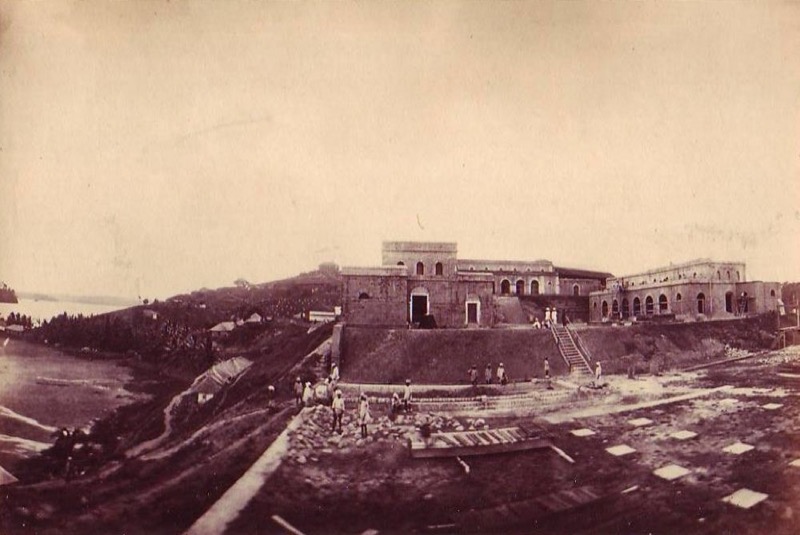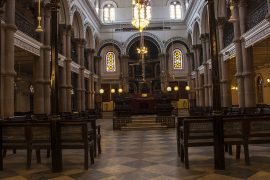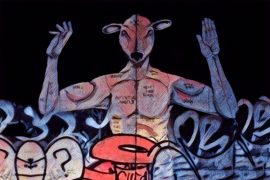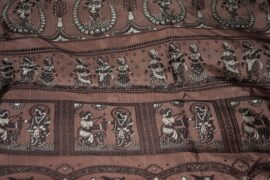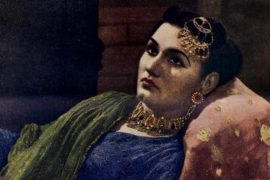You see the wall around? Do you know why it is so low? Because it is impossible to escape from this place. The sea surrounds it for a distance of 1000 miles. In the forest, you do not find any other animals than pigs and wild cats; it is true, but there are savages who are called Jarawas. If they happen to see any man, they do not hesitate to pierce him right through with their sharp arrows.
The ‘cellular jail’ of Andaman and Nicobar Islands, located far from the mainland, stands as a symbol of British colonialism. Political activists, who sought freedom and independence, were imprisoned there, humiliated, tortured and forced into submission. Away from the mainland, the cellular jail was designed to detain and deter freedom fighters from daring to stand up against the colonial authorities.
The testimonies of the prisoners inform us that the cellular jail was indeed a house of horrors. Many prisoners succumbed to physical and mental torture; most of them did not live to witness a free India. Today, it stands as a symbol of cruelty, a monument that highlights how Indian freedom fighters fought against tyranny.
The idea of using the Andaman and Nicobar Islands to imprison those who rebelled against colonial authorities resulted from the Indian Revolt of 1857. Since mutilation of limbs was outlawed, they decided to induce fear of imprisonment to discourage Indians from raising their voice against British hegemony.
Isolation and incarceration from society, along with torture behind the walls, became a tactic. The islands, 1200 km from the mainland, became a habitat of silent suffering.
The construction of the cellular jail at Port Blair was suggested in 1890, and the construction began in 1896. To put a “total end” to the “contamination” of ideas and thoughts of prisoners, the cellular jail system was planned to imprison six hundred convicts with the Auburn system—solitary confinement with enforcement of complete silence. Prisoners were forced to do hard labour throughout the day. At night, they were put in separate sleeping areas.
The project was completed after ten years at a massive investment of Rs. 5,17,352. An enormous structure emerged as a “matter of great urgency.” A turret stood in the centre of seven three-floored wings stretching in all directions like a wheel. A total of six hundred and ninety eight cells were created, and hence, the prison came to be known as the cellular jail. High walls and long corridors are tell us of the horrors that have been inflicted upon its prisoners.
Also known as Kala Pani Jail, the cellular jail was an exile for offenders. Imprisonment at Kala Pani was perceived to be worse than death. The person who was subjected to imprisonment not only lost his right to live in society but also lost his status.
Isolation from the mainland was used to cut freedom fighters off the freedom movement; they were also forced to remain isolated from one another. The jails were built with the idea of preventing any interaction between the prisoners themselves.
Prisoners arrived on the island with fetters and shackles on their feet. The island was tough to navigate, with its dense forest and perennial rainy season; they made their way through muddy marshes filled with scorpions, leeches, and snakes. Of course, they were punished if they dared slow down on the path.
Prisoners were subjected to laborious tasks such as clearing forests, making hookah shells, grinding grains, extracting coconut oil, pounding the coconut husk, etc., in addition to stringent jail regulations.
While grinding the oil mill, prisoners, regardless of their age, were yoked to the wheel’s handle. The task was so arduous that it is described as “twenty turns of the wheel were enough to drain away the strength of the strongest coolly and the worst brawny badmash.” However, twenty rounds were far less than what the prisoners were made to do.
They were locked up like captives, tied down with fetters specifically to cause physical and mental torture and treated like animals who would get flogged. The prisoners were even harnessed to carriages like bulls and horses and whipped for transportation. Prisoners who failed to carry out their assigned tasks would receive additional punishments.
The first time, they were handcuffed for a week; the next time, they were fettered for a month or two; the third time, the prisoners were compelled to keep their legs apart for ten days with crossbars between them. The time of the punishment would be extended if there were more offences, and they could even be subjected to long, solitary confinement.
The prison had no sanitation facilities, and there were no toilets in any of the cells. The prisoners were allowed to go out once in the morning, then at noon, and later in the evening. No exceptions were made to those three times, regardless of the circumstances. There was always a scarcity of water, even for drinking, let alone allowing the prisoners to bathe or wash their hands. Some prisoners succumbed to illness and insanity, while some also committed suicide or died.
When the information of the suicide of two prisoners—named Indu Bhusan Roy and Ullaskar Dutta—came out, it revealed how the political prisoners at the cellular jail were dealt with.
The prisoners participated in a series of peaceful agitations, strikes, and hunger strikes to rebel against the inhumanity. The first hunger strike of 1933 resulted in force-feeding and the use of iron rods to beat up the rebels. It led to the death of freedom fighters such as Mahabir Singh, Mohit Maitra, Indu Bhushan Rai, Kehar Singh, and many more. It was assumed that no one on the mainland would learn of these events. However, despite the strict watch of the jail authorities, news passed.
Finally, the hunger strike of 1937 received nationwide sympathy and shook the foundation of this system. The news of their suffering had reached the mainland, and other freedom fighters in the prison at other facilities began joining the strikes to support Kala Pani captives. Rabindranath Tagore, Mahatma Gandhi, and the Congress Committee started to intervene, and after thirty-six days, two hundred freedom fighters ended their strike. They were giving in to the pressure; by January 1938, the colonial authorities released all the freedom fighters, and they returned to the mainland.
-30-
Copyright©Madras Courier, All Rights Reserved. You may share using our article tools. Please don't cut articles from madrascourier.com and redistribute by email, post to the web, mobile phone or social media.Please send in your feed back and comments to [email protected]

